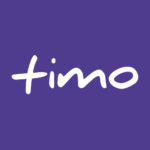The collective customer base of the neo and challenger banks is expected to grow at a CAGR of 50.6% from 2017-2020, a growth that will be driven by factors such as favorable government regulations, convenience offered to consumers and higher interest rates than traditional banks, according to a recent report by Allied Market Research.
“Digital challenger banks are simplifying the financial world, creating a customer centric approach to services, and transforming the way banking is viewed by the public and the market,” said Sheetanshu Upadhyay, BFSI Research at Allied Market Research. “In return, they endeavor to deliver larger returns on equity as compared to those offered by prominent traditional banks. They strive to offer greater flexibility when it comes to lending through streamlined operations and costs.”
In particular, the neo and challenger banks market in China is anticipated to witness the fastest growth rate during 2017-2020.
But beyond China, neo and challenger banks have been quick to emerge in all parts of Asia including India, Indonesia and Vietnam, a trend that has been driven by the increase in penetration of smartphones and Internet in emerging economies. Btw: A challenger bank for Singapore is still missing.
Today, we look at some of the most notable neo and challenger banks in Asia.
WeBank (China)
 WeBank is known for being the first private digital-only bank in China. It was established in early 2015 by Internet giant Tencent. Tencent is China’s biggest messaging and social networking company, and the operator of WeChat.
WeBank is known for being the first private digital-only bank in China. It was established in early 2015 by Internet giant Tencent. Tencent is China’s biggest messaging and social networking company, and the operator of WeChat.
WeBank provides consumer banking services through digital channels, as well as microcredits and other loan products.
Major shareholders of WeBank also include investment holding company Shenzhen Liye Group and Shenzhen Baiyeyuan Investment, the parent company of Shanghai-listed Joincare Pharmaceutical Group Industry Co., Ltd.
MYbank (China)
 In 2015, Alibaba launched MYbank, an online bank for the Chinese market. MYbank focuses on consumers and small and medium-sized enterprises, and uses credit data from the e-commerce giant’s AliPay product to conduct analysis for loans.
In 2015, Alibaba launched MYbank, an online bank for the Chinese market. MYbank focuses on consumers and small and medium-sized enterprises, and uses credit data from the e-commerce giant’s AliPay product to conduct analysis for loans.
The bank launched with the mission “to provide inclusive and innovative financial solutions for individuals in both urban and rural areas and small and micro-enterprises.”
MYbank is 100% digital, branchless and serves customers 24 hours a day.
Digibank (India)
 A mobile-only bank, Digibank was launched in April 2016 in India by DBS Bank, one of Singapore’s leading financial institutions.
A mobile-only bank, Digibank was launched in April 2016 in India by DBS Bank, one of Singapore’s leading financial institutions.
The DBS Digibank app was designed to make banking simpler, smarter and faster for customers. Digibank offers 24-hour customer service via an artificial-intelligence-driven virtual assistant. Indian officials called its debut a “WhatsApp moment of banking.” Customers can open an account at any one of 500 selected cafes using their fingerprint and biometric ID cards.
DBS Bank plans to launch its mobile-only banking services in Indonesia and China.
Timo (Vietnam)

Open your Timo Account here
Timo is the first Digital Bank in Vietnam, operating since January 2016. Through a partnership with local bank VP Bank, Timo provides a comprehensive set of tools supporting their financial needs with banking services essentials. Users can manage their bank accounts easily and conveniently through the Timo mobile app or send money to friends just by using the phone number.
First launched in Ho Chi Minh in early 2016, Timo expanded to Hanoi later that year. This March, Timo began offering insurance products through a partnership with Sun Life Vietnam.
Vietnam’s first digital bank Timo – which stands for “time is money” – has on-boarded more than 50’000 clients since launching May last year, highlighting the appetite of Vietnam’s millennial generation for all things mobile. Their story reminds of successful US digital only banks such as Moven and Simple.
Timo’s CEO told Fintechnews in a recent interview that Indonesia and Philippines are also interesting markets for them.
Jibun Bank (Japan)
 Established in 2008, Jibun Bank is a mobile-only bank that has become one of the largest and most profitable mobile banks in Japan. The bank offers commercial banking services as well as payment services. Payments are coursed through three channels: mobile, Internet and telephone.
Established in 2008, Jibun Bank is a mobile-only bank that has become one of the largest and most profitable mobile banks in Japan. The bank offers commercial banking services as well as payment services. Payments are coursed through three channels: mobile, Internet and telephone.
Jibun Bank is a 50-50 joint venture between the Bank of Tokyo-Mitsubishi UFJ and local telco, KDDI. In its first year, the bank accumulated over 500,000 new customers. In 2015, Jibun Bank reported the highest number of mobile banking accounts in Japan – 2 million – for a compound annual growth of 11.15%, according to the Asian Banker.
Jenius (Indonesia)
 Jenius is a mobile banking channel created by Bank Tabungan Pensiunan Nasional (BTPN) and launched in 2016. Jenius isn’t a bank per se but rather a digital banking platform provided by the bank. Users must have a bank account with BTPN before they can use Jenius.
Jenius is a mobile banking channel created by Bank Tabungan Pensiunan Nasional (BTPN) and launched in 2016. Jenius isn’t a bank per se but rather a digital banking platform provided by the bank. Users must have a bank account with BTPN before they can use Jenius.
Among the unique features on Jenius is $Cashtag, which allows peer-to-peer money transfers. Users can also personalize their bank accounts. Another unique feature is One Touch that authenticates account owners using their fingerprints. Jenius users can also send and request money between themselves.
K Bank (Korea)
 Launched earlier this week, K Bank is South Korea’s first digital-only bank. The bank, led by the country’s telecom giant KT Corp and 20 other companies, allows customers to do everything from open a bank account to apply for a loan through their smartphone. It comes with a debit card that lets users withdraw cash at 10,500 ATMs across the country.
Launched earlier this week, K Bank is South Korea’s first digital-only bank. The bank, led by the country’s telecom giant KT Corp and 20 other companies, allows customers to do everything from open a bank account to apply for a loan through their smartphone. It comes with a debit card that lets users withdraw cash at 10,500 ATMs across the country.
K Bank offers cheaper loans to borrowers who have a good record of debt repayments but are regarded by other lenders as low-credit rating holders. It uses KT Corp’s big data system to more deeply analyze clients’ credit ratings.
Kakao Bank (Korea)
 Kakao Bank is an internet-only bank in the final countdown to launch in June this year. Kakao Bank, which is managed by South Korea’s largest mobile messaging service provider Kakao Corp., has just received approval from the Financial Services Commission (FSC), becoming the second entry after K Bank started service earlier this week.
Kakao Bank is an internet-only bank in the final countdown to launch in June this year. Kakao Bank, which is managed by South Korea’s largest mobile messaging service provider Kakao Corp., has just received approval from the Financial Services Commission (FSC), becoming the second entry after K Bank started service earlier this week.
Yun Ho-young, the bank’s co-head, said that one of Kakao Bank’s distinctive offerings was overseas remittances. He also noted the bank’s link with Kakao Talk, which has about 40 million users, as a notable strength. Kakao Bank’s quick remittance service will be run based on Kakao Talk’s friend list. Users of the messaging app will be able to send money to their Kakao Talk’s contact simply and conveniently.
Kakao Bank as nine shareholders including Korea Investment Holdings Co., KB Kookmin Bank, Netmarble Games Corp., and eBay Inc. Its starting capital is 300 billion won (US$266.7 million).






